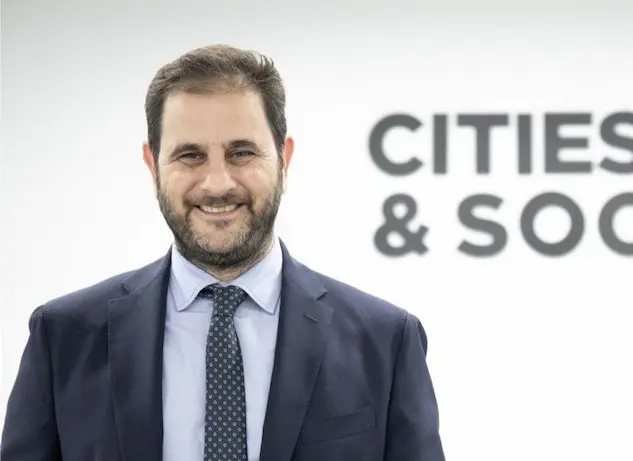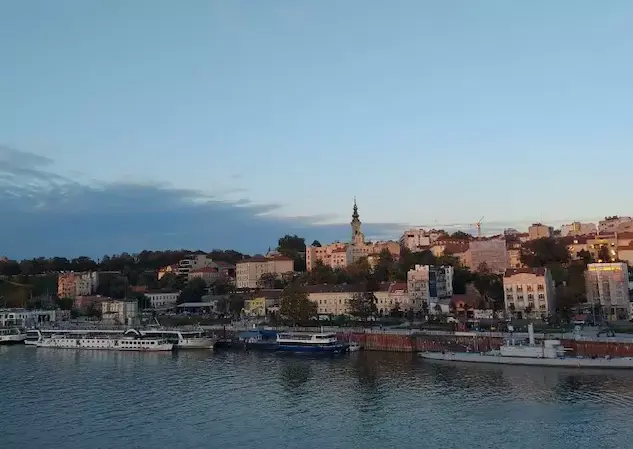Urban sustainability in the Western Balkans is no longer a distant goal but an urgent need. From Belgrade to Sarajevo, cities in this region are facing mounting environmental challenges, strained infrastructure, and growing pressure for cleaner, greener, and more livable urban spaces. Air quality in the Balkan capitals remains a critical concern, shaping the sustainability agenda in these Western Balkan cities. Urban sprawl continues unchecked, air pollution levels are dangerously high, and green spaces are shrinking under development pressure. However, public awareness is rising, and city leaders are investing in sustainable transport, renewable energy, and urban green spaces.
This article delves into how the capitals of the Western Balkans are addressing sustainability, focusing on air quality and carbon emissions. It explores urban air challenges in the Western Balkan capitals and includes other cities in the Balkan for comparison. Using recent data and city-level comparisons, it highlights where meaningful progress in achieving air quality improvements is being made and where much more needs to be done.

Geography and urban form: air quality constraints in the Balkans
The sustainable development of the capital cities of the Western Balkans is shaped by management quality and historical traditions. Geographical and natural features strongly influence air quality in these cities too. At New Polis we have previously explored the factors shaping urban development in the Balkans. ow we are slightly shifting our focus.
Geography imposes hard limits on many Balkan cities. For instance, Sarajevo, nestled in a deep mountain basin, traps cold air and pollutants during winter, causing persistent smog. Even cities with better ventilation, like Athens and Podgorica, face seasonal pollution spikes due to traffic, heatwaves, and dust.
Urban layout also significantly affects air quality. Many Balkan capitals inherited sprawling, car-dependent development patterns from their socialist past including large peripheral housing blocks, crowded centers, and weak planning enforcement. Informal settlements on city edges often lack infrastructure and green spaces.
Additionally, the region’s reliance on fossil fuels remains stark. For example, the 16 coal-fired power plants in the Western Balkans, collectively producing just 8 GW of power, emit more sulfur dioxide than the 250 coal plants, which have a combined capacity of 156 GW.
Air quality: a hidden public health crisis
Before delving into the city-by-city data, it is important to note that despite some progress, air pollution in the Balkans as a whole remains a systemic challenge. For instance, over the past decade, average concentrations of PM2.5 in the region have remained nearly four times higher than the World Health Organization’s recommended threshold of 5 µg/m³. While some cities have achieved modest reductions in their pollution loads, the problem remains deeply entrenched across the region.
Coordination gaps between national and municipal authorities continue to slow the implementation of air quality legislation, with only a few countries like Albania and North Macedonia taking steps toward dedicated governance mechanisms and capacity-building at the local level. Public concern is increasing, but policy responses are often inconsistent and underfunded.

PM2.5 concentrations: a regional concern
According to data from the European Environment Agency (EEA), Skopje, Sarajevo, and Belgrade frequently report some of the highest average PM2.5 levels in Europe — often two to four times above the WHO’s safe guideline of 5 µg/m³.
In Sarajevo, for example, the average annual PM2.5 level reached 42.5 µg/m³ in 2020. Though Bosnia and Herzegovina saw an 18% reduction in PM2.5 in 2023, it still remains the most polluted country in the region. Sarajevo was the most polluted capital city in Europe in 2024, with an average PM2.5 concentration of 30.8 micrograms per cubic meter of air (μg/m³). The second most polluted capital city in Europe that year was Skopje with an average PM2.5 concentration of 21.6 μg/m³. During winter peaks in late 2024, Belgrade ranked among the world’s top 10 most polluted capitals, with PM2.5 levels reaching as high as 98 µg/m³ on certain peak days. Even in coastal cities like Athens, pollution spikes occur during periods of heavy traffic, low rainfall, or high heating emissions.
Carbon emissions: low on paper, slow in progress
While air pollution is the most visible problem, carbon dioxide (CO₂) emissions will ultimately determine the long-term climate trajectory for Balkan capitals. Most of these cities face a paradox: relatively low per capita emissions, but sluggish progress toward decarbonization. The Western Balkan capitals emit between 2 and 6.5 t CO₂ per capita, which is lower than wealthier EU cities (typically over 5–10 t CO₂). However, this is mainly due to lower levels of industrialization and consumption. Despite these lower numbers, the transition to clean energy is lagging, and much more is needed.
Looking ahead, it is crucial to examine how PM2.5 pollution trends intersect with carbon emissions to understand the full scope of the region’s environmental challenges.

What drives the pollution?
The sources of pollution are varied but share common causes:
Residential heating: Many households still rely on coal, wood, and outdated stoves, particularly in lower-income areas.
Traffic emissions: Old vehicle fleets, weak emission controls, and insufficient public transport exacerbate urban pollution. For example in the Western Balkans transportation is the second largest emitter, responsible for roughly 13% of total GHGs, with oil remaining the dominant fuel.
Geography: In cities like Sofia, and Sarajevo, mountainous landscapes trap pollutants, especially during winter inversions.
Industrial emissions: Despite reductions since the 1990s, local industries still contribute to pollution levels.
Fossil fuel dependence: Many cities still rely heavily on coal and fossil fuels for industry, electricity generation and transport although this differs significantly between economies: Albania did not rely on fossil fuels at all, whilst Kosovo almost exclusively sourced its electricity from fossil fuels.
Using of low–grade, high emission coal (lignite) for energy generation and heating. For example, in the Western Balkans energy generation remains the primary driver of greenhouse gas emissions, accounting for nearly half of all output. As we mentioned above, the Western Balkans are home to several of Europe’s most polluting coal-fired power plants, contributing significantly to both public health crises and the region’s carbon footprint.
The human cost of inaction
The health consequences of air pollution are severe. It’s linked to higher rates of respiratory diseases, asthma, and premature deaths. For example, according to a UN study from 2019 air pollution is responsible for 20% of premature deaths in 19 Balkan cities. Residents in these areas lose an average of 1.3 years of life due to poor air quality. The 2022 report showed that in 2019, 11.8 percent (56,300) of total deaths in Southeast Europe were linked to air pollution, with outdoor PM 2.5 representing the largest fraction (46,600 deaths and 9.7 percent of total deaths) of air pollution–related deaths. The average rate of death attributable to air pollution was nearly four times higher in this region than in Western Europe. The largest numbers of deaths attributable to air pollution in 2019 were in Romania with 17,100 and Serbia with 12,700. Vulnerable groups, such as children, the elderly, and low-income populations, are disproportionately affected. Yet, many cities lack real-time pollution monitoring systems or localized public health data to respond effectively.

Policy responses: progress, but not enough
Some cities have made strides, but the responses remain fragmented. For example, Belgrade has committed to phasing out coal in district heating and improving air quality monitoring, but implementation is slow. In an effort to tackle residential emissions, the city plans to install 150,000 mechanical filters on household chimneys by 2026, targeting a 40% reduction in PM10 emissions from individual heating sources. These measures are part of Belgrade’s 2021–2031 Air Quality Plan, which identifies small-scale heating as the dominant source of particulate pollution, accounting for over 60% of PM10 and more than 75% of PM2.5 national emissions.
Some other cities are more successful in implementing measures to promote air quality. For example, Athens is taking measures to limit traffic in the city center and to develop public transportation and various alternative modes of mobility. The result is a significant improvement in air quality: from 2020 to 2024 the air quality index improved from 57 to 44
Several Balkan capitals are beginning to move toward renewable energy, though at different speeds. For example Athens is developing programs of energy communities based around solar power plant. In general, Greece hosts one of the highest numbers of energy communities in Europe and has a very developed solar power markets.
Serbia launched its first auctions for solar and wind power in 2023, allocating 400 MW of wind and 50 MW of solar at competitive prices. Albania has gone further, completing its third renewable auction and commissioning the Karavasta PV plant (140 MW)—one of the largest in the region. North Macedonia is preparing a similar auction mechanism, while Montenegro is drafting enabling frameworks. Still, grid integration, permitting delays, and limited financing remain major bottlenecks.
Without stronger air quality governance, urban sustainability in the Balkans risks stagnation. The cost of inaction — in terms of public health, economic loss, and urban decay — far exceeds the investment needed to tackle the pollution problem.
The way forward: from declaration to action
Policy declarations are not in short supply. The 2020 Sofia Summit saw all Western Balkan economies endorse the Green Agenda for the Western Balkans—a framework that echoes the European Green Deal. This includes ambitious goals like reaching climate neutrality by 2050, enhancing biodiversity, promoting sustainable food systems, and cleaning up air, water, and soil pollution. However, translating these goals into operational urban policies remains a work in progress.
Meanwhile, EU member states in the region—Greece, Bulgaria, and Croatia—have already embedded legally binding climate objectives within the framework of the European Green Deal. Greece, for instance, has codified in its National Climate Law a plan to phase out lignite-fired electricity by 2028, aiming for a 55% GHG reduction by 2030 compared to 1990 levels and full carbon neutrality by 2050 . Between January and April 2024, renewables (including large hydro) met over 57% of Greece’s electricity demand, slashing emissions from lignite by 55% year-over-year.
Bulgaria’s National Recovery and Resilience Plan (approved December 2023) dedicates 39% of its €10 billion budget to green transformations, including sustainable energy, mobility, and urban resilience.
Croatia has also integrated climate adaptation into its municipal policies, rolling out green urban infrastructure in cities such as Zagreb and earmarking nearly €2 billion for energy-efficient building renovations, plus €728 million for sustainable transport and EV infrastructure under its RRF/REPowerEU programme.
By contrast, Western Balkan economies are still laying legislative groundwork—drafting emissions laws, setting up clean-air commissions, and piloting local air quality plans. Binding limits, industrial emission controls, and widespread adoption of best available techniques remain nascent. Certain technical upgrades are ongoing. For example, the desulphurisation process at Serbia’s Kostolac B power plant and the ecological overhaul of the Pljevlja plant in Montenegro. However, these are exceptions rather than the rule.
Air quality in the Balkan capitals remains a defining challenge as these cities need to make a strategic leap toward a more sustainable urban future. To achieve this, they must move beyond fragmented actions and embrace comprehensive, city-wide strategies.
In Part II of this series, we will explore how the Balkan capitals are reshaping mobility and integrating green infrastructure to build healthier, more sustainable cities for the future.


